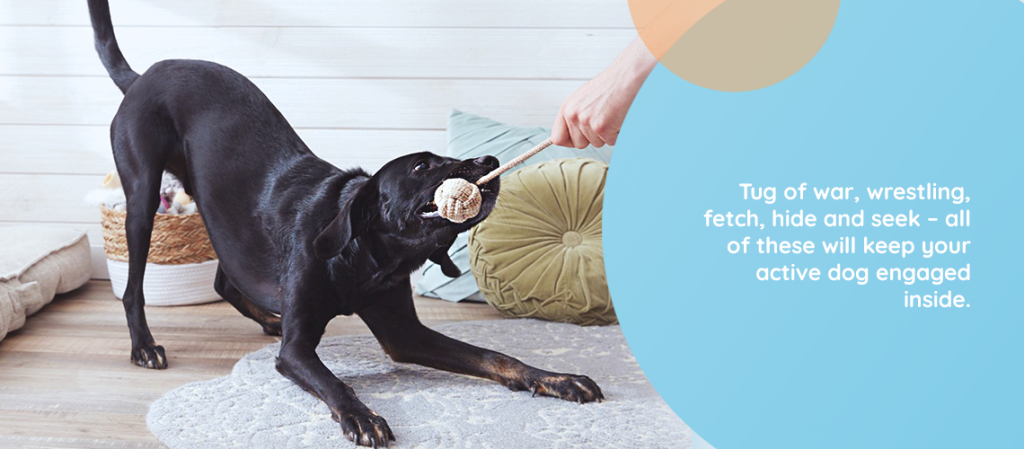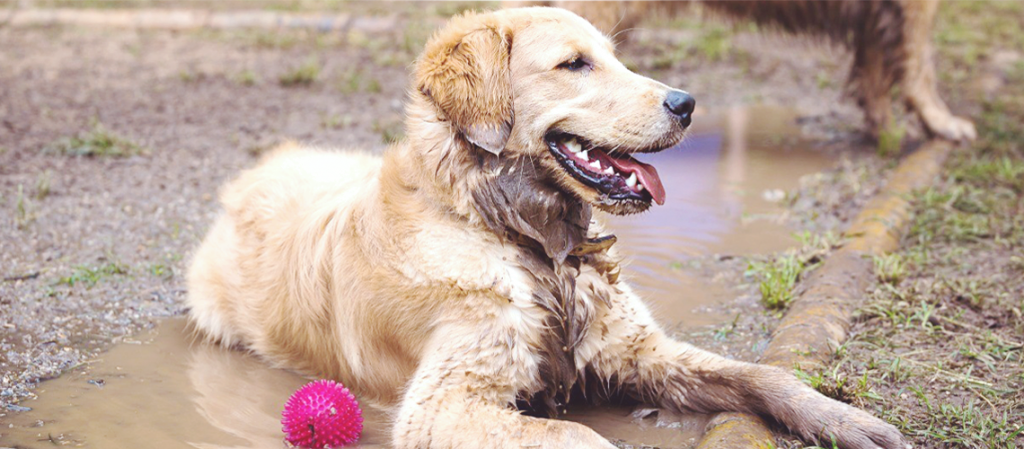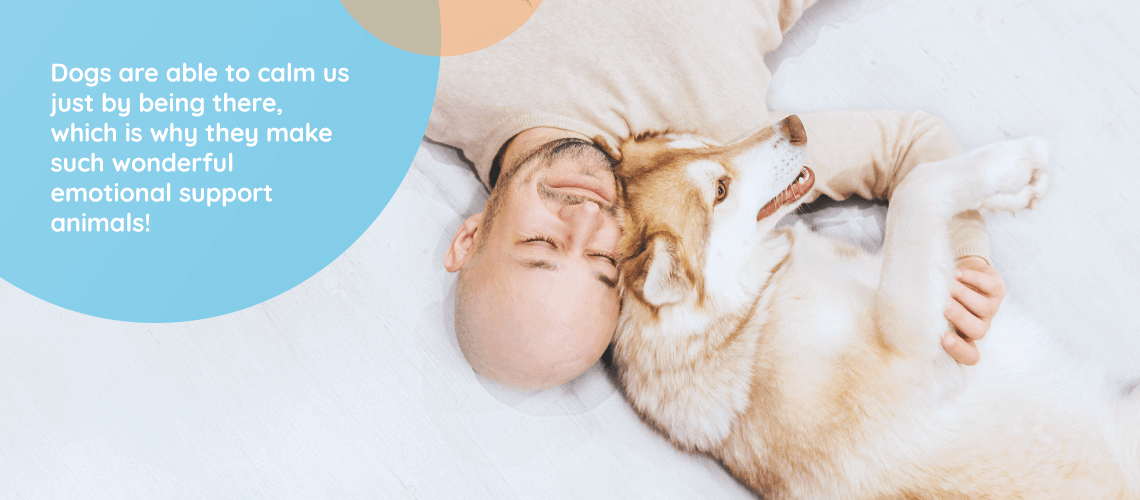The weather outside is frightful! Throughout the late spring and summer, many parts of the United States see regular rain and heavy thunderstorms. That can make it hard to go outside as much as you – and your dog – would like to.
Dogs vary greatly in their responses to rain, soggy ground, and sometimes cold spring weather. Some dogs LOVE rain but really hate wet grass under their paws. Others won’t set foot outside when the rain is coming down, but they are ironically happy to play in a lake or pond.. Still others are willing to go out only long enough to take care of necessities and then run right back inside. If you are able to safely get your dog some outside time, make sure to keep an eye out for puddles that may contain things like oil from a car or pesticide run off and clean their paws completely when you’re back home, or invest in paw protection before you go out. Even so, there are times it’s just too wet and nasty for man or beast to leave home.
And if you’ve had an energetic dog going stir crazy in yucky weather, you know how badly that can go, for you and your furniture…your shoes… your plants…your treat supply. Even the most wonderful dog can go a little wild when they are unable to burn off excess energy. If, like so many of us, you’re working from home, it’s even harder! In their doggie brains, you’re there and that means you’re available for a walk! (They don’t check the weather apps.) How can you keep your pooch occupied for an extended time when they can’t go out much?

The Shell Game
This used to be a staple on game shows for humans! Use three opaque cups (clean, empty yogurt containers are perfect) and put a treat under just one of them. You must let your pet watch you do this. Then, while they watch, mix up all three cups, swapping their positions several times. Step back and see how long it takes your pooch to find the treat. They’re developing scenting skills and solving a puzzle, which is great for their brains.
Treat-dispensing Toys
We all know how much our dogs love their treats! Making those treats harder to get will keep them occupied for hours (or at least minutes). Whether you choose a Kong, a Buster Cube, a Genie, a DIY option made from a tennis ball or something completely different, your dog will be intensely occupied trying to get at the goodies inside! Some pet owners swear by peanut butter inside a Kong! (Pro tip: if peanut butter is your dog’s favorite treat, make sure you use a toy that can be safely washed with HOT water and soap or run through the dishwasher.)
For an extra level of difficulty, get a few of these toys, fill them up and hide them in your dog’s favorite spots while they’re napping. If you have flights of stairs, a basement, multiple levels of your house, make the most of your space. Their noses will lead them to the treats and extend the fun and mental workout!
Interact as Much as You Can
Tug of war, wrestling, fetch, hide and seek – all of these will keep your active dog engaged inside. What you can do is obviously dependent on how much space you have and how big your puppy is. It’s SO hard for them if you’re working from home and focusing on anything BUT them. Taking even 20 minutes to play with them, twice a day, followed by delivery of a fresh Kong, will satiate their needs for both activity and YOU time.
If you have stairs inside your home, you can use those to make the most of “fetch,” throwing things to the top and bottom, and wearing your puppy out.
Slow Feeding Toys
Snuffle mats, puzzle feeders, lick mats and other options take the treat-dispensing toy to another level. These creative options, available online and at major pet retails outlets, make your dog work for their food. Unlike cats, dogs are known for scarfing their food down. Slow feeders can help keep your pooch from eating too fast, while keeping them entertained.
They exercise your dog’s brain in ways you couldn’t imagine! If you want to make a slow-feeding toy specific to your pet, Pinterest and YouTube have tons of options and detailed directions to help you out. The idea is that your pet has to solve the puzzle or follow the path to get to their dinner.
Learn More Tricks
IF you have the time, being home with your dog can be a great time to learn new things. We know that, even if you’re working from home, you may not have the time you WANT to devote to your dog. But if you do have the time, indoor time is a wonderful opportunity to teach even an old dog new tricks. Check out YouTube and Pinterest to learn more awesome ideas about how you can train your dog while spending more time inside.
Get Another Dog
We know…. This might sound counter intuitive. Two dogs are more work than one. But the bonus is that they keep each other entertained! Two dogs, no matter their relative ages, will keep each other exercised, entertained, happy and healthy. They will chase each other, play tag with each other and tug of war over anything they can (hopefully not your favorite shoes!).
If you already have a younger dog or puppy, getting them a BFF will have exactly that benefit. They’ll have a friend for life who will grow and age with them. If your dog is older or senior, getting a younger dog will help them become revitalized, more energized and healthier. Of course, it’s important to make sure that the dogs have chemistry and play well together.
It’s not easy to get your energetic dog to stay calm when they can’t go outside like they’re used to. But there are lots of ways you can help your dog burn off calories and adrenaline, no matter what the conditions outside are. Playing inside as much as you can and keeping your dog’s brain active will help make that easier.
To take your dog almost anywhere, no matter the weather, get them certified as an Emotional Support Animal! The laws are going to change and prices will increase, so it’s the perfect time to learn how to make that happen, at the best possible prices. Get your pet certified as an ESA now!






